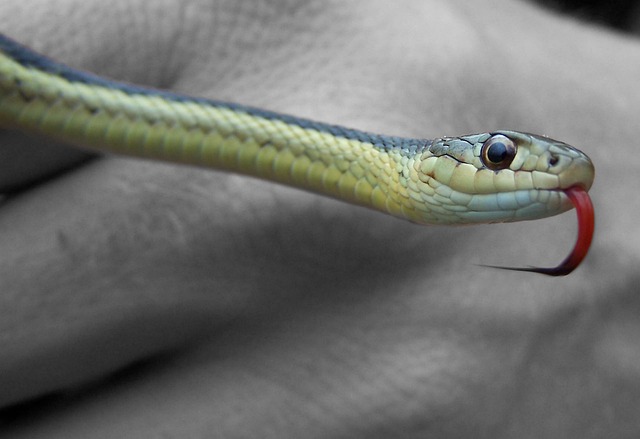Snakes are mysterious, captivating creatures. We often think of them as dangerous and deadly due to their ability to inject venom. But did you know that many snakes’ tongues contain venom too? Let’s dive into the world of snake tongue venom and decide whether it is a fact or fiction.
Does a snake tongue contain venom?
For a long time, it has been thought that a snake’s tongue delivered venom with its bite.
However, it is not the tongue that delivers venom as part of the snake’s bite. Instead, snakes possess poison glands in their lower jaws responsible for producing venom, which is then released through hollow teeth connected to these glands located at the front of their mouth.
A snake’s tongue is used to identify potential prey and make sure what they target is edible before consuming them, much like other animals’ mannerisms when scavenging for food.
Nevertheless, depending on the species, a snake may still be able to produce a level of toxicity harmful to humans should it be touched or infringed on, so it would be best to protect yourself when coming into contact with these creatures to stay safe.
The Science Behind Snake Tongue Venom
Snake tongues have an interesting anatomy.
A snake’s tongue contains a series of grooves on its surface that allow it to collect chemical particles from its environment.
These particles can be analyzed by a structure called Jacobson’s Organ, located inside the snake’s mouth.
This organ helps snakes identify food and mates, as well as detect predators.
It has been hypothesized that these same grooves may also allow some snakes to collect venom from their prey and transfer it into their bodies via the tongue.
The up-to-date verdict
Although this theory is still being researched, there have been some studies that suggest certain types of snakes do indeed possess venom in their tongues.
For example, one study found that some cobras have a particular protein in their tongues that can paralyze small prey items with just a single lick.
Another study found rattlesnake species with thicker-than-average tongues tend to have more powerful venom than thinner tongues. While these studies are promising, more research must be done before we can definitively say if any snake species has venom on its tongue.
Are All Snakes Venomous?
It’s important to note that not all snakes possess venom; only certain species do – usually, those who rely on it for defense or hunting purposes.
So even though some snakes may possess trace amounts of venom in their tongues, they are generally considered harmless because they lack the vital organs needed for injecting the toxins into other organisms.
Most non-venomous snakes rely on constriction instead, which is much less threatening than injecting toxins directly into another organism’s bloodstream.
Do snakes bite with their tongues?
Snakes have a fantastic outreach with their tongues.
The rapid and frequent flicking of the tongue is used to quickly receive scents in their surrounding environment, known as olfaction.
Understanding olfaction leads us to whether or not snakes bite with their tongues.
Generally speaking, snakes do not “bite” with their tongues in that they do not use them as teeth like some other animals; however, they may strike out with their mouth depending on the size and species of snake.
Since many species of snake feed on live prey, they may snatch prey items up using quick movements of the mouth and jaws.
Ultimately, more investigation into a specific snake species would be needed to accurately assess how a given species uses its tongue to interact with its environment.
Where does the tongue go when a snake flicks it?
Snakes use their tongues to sense their surroundings, not unlike how humans utilize their sense of smell.
When a snake flicks its tongue, they are rapidly moving and flicking it in and out of the side of its mouth.
This action picks up microscopic particles from the air, which enables them to detect things such as prey or predators.
The particles then travel through small tubes on either side of the snake’s mouth and directly onto an organ known as the vomeronasal located on the roof of its mouth.
Perceiving information through ‘smelling’ these particles are known as ‘Jacobson’s Organ,’ named after Karl, a scientist who first discovered it in 1813.
Conclusion
Snakes are fascinating creatures with many secrets hidden below the surface. For example, one mystery yet unsolved is whether or not all snakes possess trace amounts of venom in their tongues – something scientists are still researching today.
Although some studies suggest certain types of snakes may indeed contain traces of toxins within their grooved tongues, more research needs to be done before we can definitively say if any species have dangerous amounts of poison in its mouth.
Regardless, all snake enthusiasts should take caution when handling reptiles – regardless if they are known to be poisonous or not.




